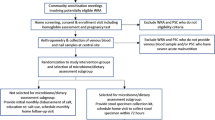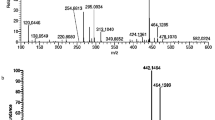Abstract
Iron Deficiency Anemia (IDA) and Iodine Deficiency Disorders (IDD) are the major public health problems often co-existing in many regions in our country. National Institute of Nutrition (NIN) has promoted the technology of double fortification of common salt with iodine and iron as a strategy to control both deficiencies under food-based approaches. Two other formulations of double fortified salt (DFS) have been subsequently developed by other agencies. NIN formulation & Nutrisalt have a stabilizer/promoter to maintain the stability of iodine in the presence of iron. The Micronutrient Initiative (MI) formulation uses physical separation of iodine by microencapsulation. NIN carried out extensive studies on stability, bioavailability, acceptability, safety and impact (including in community) of DFS. Feasibility both at factory level production and community level implementation have been worked out. MI salt had also undergone stability, acceptability and impact studies. No data is reported on the stability of Nutrisalt except that good stability is claimed in the available reports. In principle, the strategy of double fortification of salt with iron and iodine is sound with uniformly good impact on urinary iodine excretion and prevention of anemia. However, striking increments in hemoglobin (Hb) were not readily demonstrated since the intended purpose of DFS was only to provide iron at maintenance level and not therapeutic level. Complexities in the experimental designs, confounding variables and quality of the ingredients in salts also contributed to difficulties in interpretation of Hb status in studies involving DFS. Along with improvements contemplated in formulation to enhance the stability and bioavailibility, DFS should be able to fulfil the promise and realise its potential in reducing iron and iodine deficiency amongst our poor population in the next few years
Similar content being viewed by others
References
National Nutrition Policy, Govt. of India, Dept. of Women and Child Welfare, Ministry of Human Resource Development, New Delhi (1993).
Narsinga Rao BS. Fortification of salt with iron and iodine to control anemia and goitre. Development of a new formula with good stability and bioavailability of iron and iodine.Food and Nutrition Bulletin 1994; 15: 32–39.
Sivakumar B, Brahmam GNV, Madhavan Nair K, Ranganathan S, Vishnuvardhan Rao M, Vijayaraghavan K, Kamala Krishnaswamy. Prospects of fortification of salt with iron and iodine.Brit J Nut 2001; 5: S167-S173.
Nair KM. Brahamam GNV, Ranganathan S, Vijaraghvan K, Sivakumar B, Kamala Krishnaswamy. Impact evaluation of iron and iodine fortified salt.Indian J Med Res (Special Review) 1998; 108:203–211.
Satarzadeh M, Zlotkin SH. Iron is well absorbed by healthy adults after ingestion of double fortified (iron and dextrancoated iodine) table salt and urinary iodine excretion is unaffected.J Nutr 1999; 129:117–121.
A report on Doule Fortified Salt Technology — Synthesis of Studies by The Micronutrient Initiative, Canada (1999)
Malavika VK, Rajgopalan S. Double fortified salt study design. Presented at the Strategy Workshop for “Elimination of Micronutrient Malnutrition in India”, Jaipur, Nov. 1–2, 1995 on DFS.
Rajgopalan S, Malvika VK. The effect of providing salt fortified with iron and iodine on the hemoglobin and productivity of tea pluckers.The Food and Nutrition Bulletin 2000; 21(3): 323–329.
Brahmam GNV, Madhvan Nair K, Laxmaiah A, Gal Reddy Ch, Ranganathan S, Vishuvardhana Rao Met al. Community trials with iron and iodine fortified salt (Double fortified salt). Proceedings of the 8th World Salt Symposium. Singapore, Vol. 2, pp 955–960.
Brahamam GNV, Madhvan Nair K, Ranganathan S, Gal Reddy Ch, Vishuvardhan Rao N, Nadamuni Naidu A.et al. (1994). Use of common salt fortified with iron and iodine (double fortified salt) — a community study in Andhra Pradesh. National Institute of Nutrition, ICMR, Hyderabad.
Nair, KM, Sesikeran B, Ranganathan S, Sivakumar B. Bioeffect and safety of long term feeding of common salt fortified with iron and iodine (double fortified salt) in rat.Nutrition Research 1996; 18:121–129.
Madhvan Nair K, Brahmam GNV, Lakshmaiah A, Gal Reddy Ch, Vishnuvardhana Rao M, Ranganathan Set al. Sodium hexametaphosphate (SHMP) as a stabilizer of double fortified (iron and iodine) salt does not alter the calcium and phosphorus homeostasis. Proceedings of the 8th World Salt Symposium. Singapore, 2000; 2 :1253–1254. 13. Ranganathan S, Reddy V, Ramamoorthy P. Large scale production of salt fortified with iodine and iron.Food and Nutrition Bulletin 1996; 17: 73–78.
Kamala Krishnaswamy, Brahmam GNV. Double fortification of common salt with iron and iodine — Indian study. Paper presented at the National Conference on Micronutrient Fortification of Food, Jaipur, February 8–9, 1999, jointly organised by ILSI & MI.
Author information
Authors and Affiliations
Corresponding author
Rights and permissions
About this article
Cite this article
Sivakumar, B., Nair, K.M. Double fortified salt at crossroads. Indian J Pediatr 69, 617–623 (2002). https://doi.org/10.1007/BF02722691
Issue Date:
DOI: https://doi.org/10.1007/BF02722691




